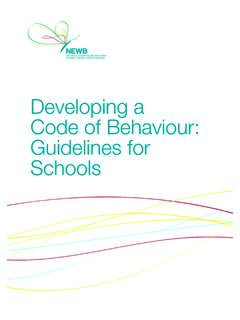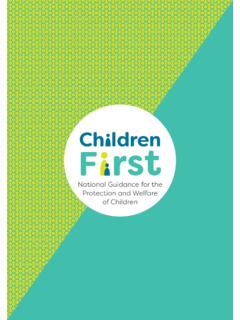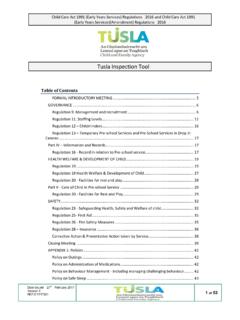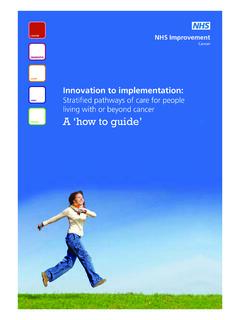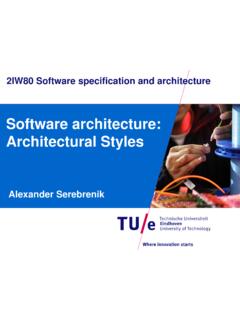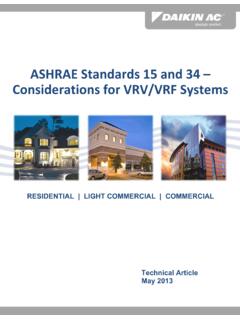Transcription of Child and Youth Participation Toolkit - Tusla
1 Child and Youth Participation Toolkit Tusla Child and Youth Participation Toolkit 1. Copyright Tusla - Child and Family Agency 2016. No part of this publication may be reproduced, stored in a retrieval system or transmitted in any form or by any means, electronic, mechanical, photocopying, recording or otherwise without the prior permission of Tusla . This resource is to support Tusla staff and funded projects to engage with children and young people in decision-making affecting their lives at the individual and at the collective level. At the time of publication all information is correct to the best of our knowledge. A list of references for previously published materials appears at the end of the Toolkit . Produced by: Dr. Celia Keenaghan and Dr. Sue Redmond.
2 Disclaimer The Tusla Child and Youth Participation Toolkit is a quick reference' document to support skilled practice both within both Tusla and funded agencies. It is designed to be used after attending the Tusla standardised Child and Youth Participation Training Programme and in the context of relevant laws, policies, procedures and guidelines that govern staff practice. Activities are offered as prompts for staff to use to support their practice and while some might be similar to activities in a therapeutic context that is not their intended purpose here. Professional judgment should be applied in the use of any of the activities. Equalities Statement Throughout the process of participatory practice with children and young people, staff should be aware of differing family patterns and lifestyles, not only due to different racial, ethnic and cultural groups but also issues of age, disability, gender, religion, language and sexual orientation.
3 Terminology Throughout the Toolkit , references are made to Child , children , young person ," Youth ", and "young people". All of these references refer to children under the age of 18 years old. The term " Child " instead of " Child and young person" is sometimes used as the latter phrase can be cumbersome and make the content harder to understand. Tusla Child and Youth Participation Toolkit Foreword to Tusla Child and Youth Participation Toolkit '. Tusla Child and Family Agency is committed to engaging with children, families and communities on the design and quality of services provided to them. Tusla works with families, young people and communities to involve them in key decisions affecting children's lives, their care and support and to provide them with the necessary tools to manage challenges while providing services that are proportionate and timely.
4 The Participation of children and young people is fundamental to a Child -centred, rights-based approach to working with children and young people. It is a requirement of the National Strategy on Children and Young People's Participation in Decision-making' (Department of Children and Youth Affairs) and is a key point of note in the National Standards for the Protection and Welfare of Children' (HIQA). Child protection is everyone's responsibility across Government and across society as a whole, and partnership, co-operation and the sharing of power, responsibility and accountability with other agencies and with children, families and communities themselves is necessary to deliver proportionate and effective services successfully. This approach leads to the best outcomes for children and young people.
5 Under the Prevention, Partnership and Family Support programme (PPFS), Tusla is committed to further developing its participatory practice at all levels in the organisation. The purpose of this Tusla Child and Youth Participation Toolkit ' is to support Tusla staff in facilitating participatory practice at every level of Tusla and in every engagement with a Child or young person. Embedding Participation throughout Tusla 's work will enable staff to identify the best supports for each individual Child and help him / her to access these supports through a range of different services offered by Tusla and partners, where possible. It is hoped that this, in turn, will reduce the need for a statutory intervention for many children and young people. This Toolkit should be seen as a guide to practice and should be used by staff in support of their own professional skills and judgement.
6 Fred McBride, Chief Executive Tusla - Child and Family Agency Tusla Child and Youth Participation Toolkit Section 1: Introduction 1. Context and Rationale 6. good Participatory Practice 13. Illustrative Examples 18. Section 2: Creating Space 27. Space Explored 27. Creating Space 29. Space Activities 32. Section 3: Facilitating Voice 56. Voice Explored 56. Facilitating Voice 59. Voice Activities 64. Section 4: Providing a Receptive Audience 104. Audience Explored 104. Receptive Audience 107. Audience Activities 109. Section 5: Ensuring Influence 121. Influence Explored 121. Demonstrating Influence 124. Influence Activities 126. Section 6: Additional Resources 144. A-Z of Participatory Methods 144. References 149. Tusla Child and Youth Participation Toolkit 3.
7 Acknowledgements The authors acknowledge the input and support of a wide range of people who gave generously of their time and expertise in the development of the Tusla Child and Youth Participation Training Programme and Toolkit . In particular: Pat Osborne, Dr. Aisling Gillen, Cormac Quinlan and all of the Child and Youth Participation Working Group. Tusla 's Workforce Learning and Development Team, in particular Dympna O'Grady, Dr. Caroline Cullen, Anne McCabe, Kerri Martin and Ann Marie Quigley and the Prevention Partnership and Family Support (PPFS) team, particularly Michelle Sheehan and Avril Dooley. The too numerous to mention Tusla and funded agency practitioners (particularly EPIC) who participated in consultation, pilots and gave feedback on many draft documents.
8 All the children and young people who contributed to research that supported this Toolkit and who participated in the piloting and design processes. UNESCO Child and Family Research Centre NUI, Galway. Tusla 's communications office for facilitating the publication process. Tusla Child and Youth Participation Toolkit Toolkit Development Process This Toolkit has been developed through a collaborative process involving a number of Tusla staff and managers, key stakeholders, community voluntary groups, and young people. The following process was involved in the development of the Toolkit : The national Child and Youth Participation working group was involved and consulted throughout the process. This group includes a wide range of stakeholders. A subgroup including representatives from the Workforce Learning and Development (WLD) team and Prevention Partnership and Family Support (PPFS) staff fed directly into the development of the resource and training materials.
9 A national survey was conducted with all Tusla staff in partnership with the National University of Ireland, Galway and Tusla on Child and Youth Participation . Regional consultations were conducted in Dublin, Cork and Galway with managers across Tusla . The resource was piloted with a comprehensive multidisciplinary cross section of the Tusla staff, managers, trainers and funded agencies. Children and young people were involved in the design of the Toolkit through: o Desk research to gather the views of children and young people from earlier research and consultations conducted and reports written;. o The pilot and design of the resource;. o Compiling a short video of their views for the training days. Relevant expertise was used in the design of this resource.
10 This included help from NALA and EPIC. THE VOICE OF A Child . WHEN CONSULTED WITH RESPECT, THE INSIGHT AND THE VIEWS. OF CHILDREN. AND YOUNG PEOPLE. ARE INVALUABLE. Tusla (2014) Towards a Shared Purpose Tusla Child and Youth Participation Toolkit Section 1: Introduction The purpose of this Toolkit is to support Tusla - Child and Family Agency staff to facilitate Child and Youth participatory practice at every level of Tusla and in every engagement with a Child or young person. It outlines: The context and rationale for Child and Youth Participation ;. Guidance in the application of the Lundy model of Participation ;. Examples of activities that can support participatory practice. This Toolkit offers a framework, and ways for Tusla staff to think about their practice beyond addressing specific social work, family support, education and/or community and voluntary practice.






